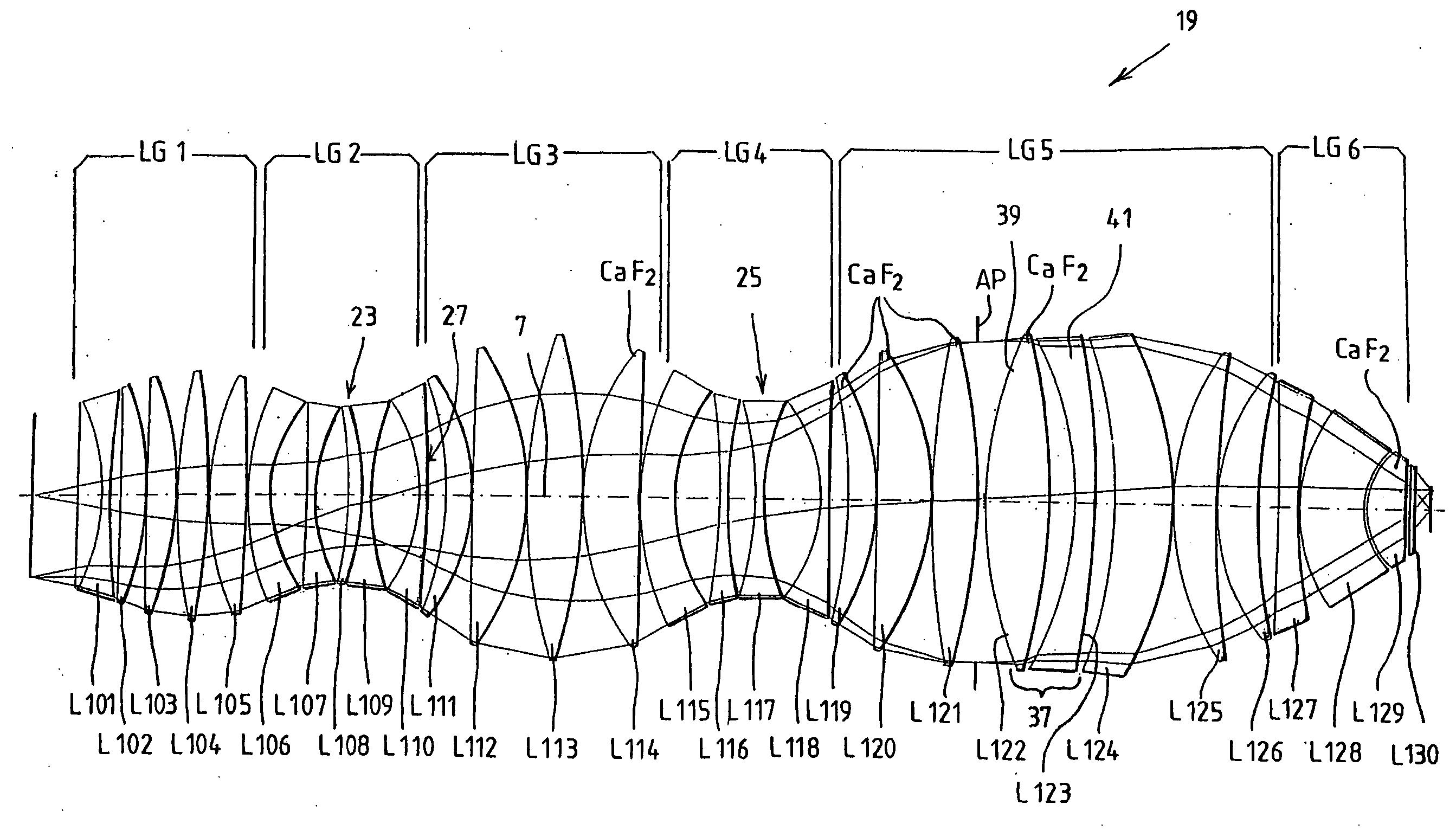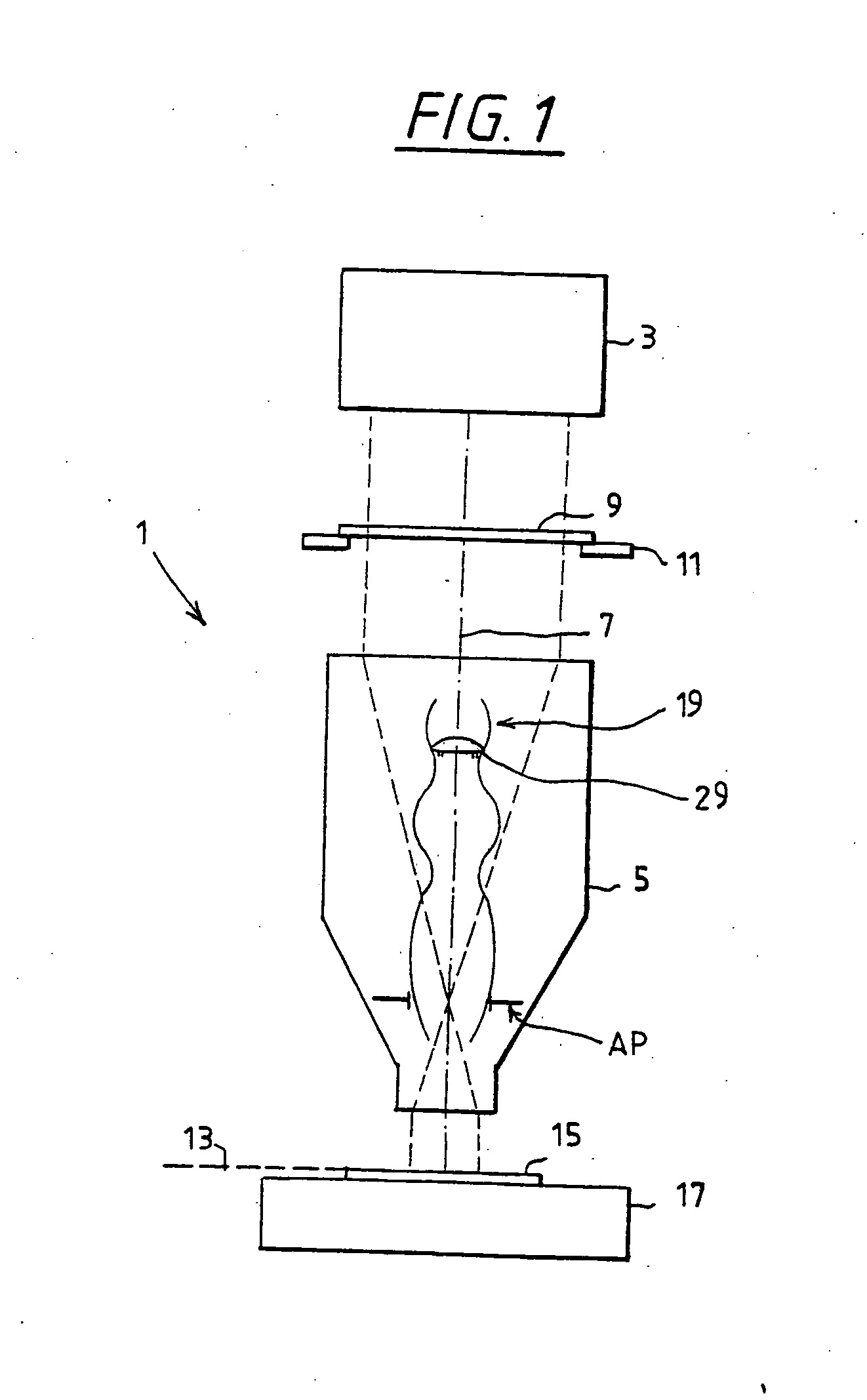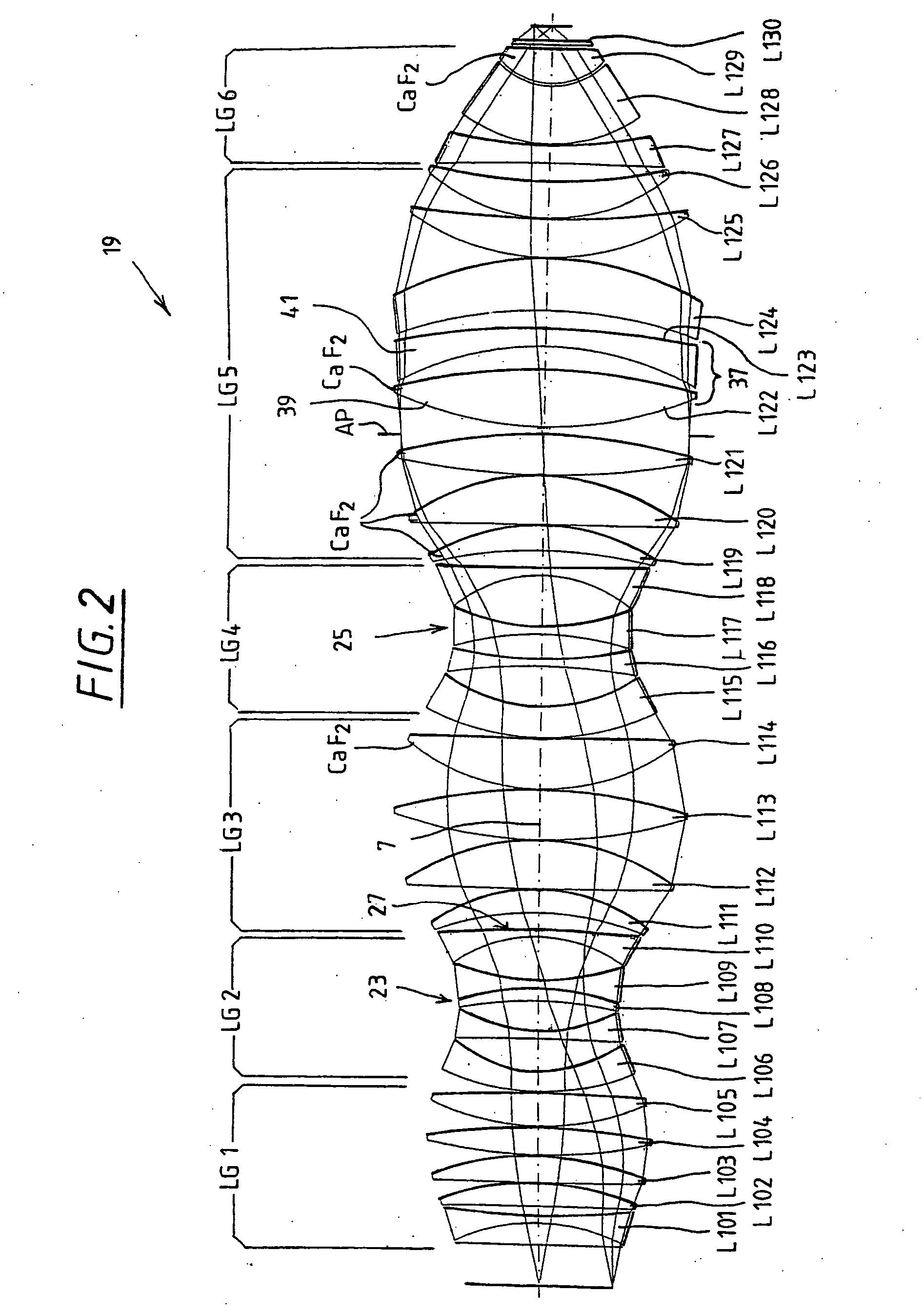Projection objective for microlithography
a technology of projection objective and microlithography, which is applied in the direction of lenses, photomechanical equipment, instruments, etc., can solve the problems of increasing costs, and achieve the effects of strong lens dispersion, easy access to processing equipment, and easy production and testing of lens surfaces
- Summary
- Abstract
- Description
- Claims
- Application Information
AI Technical Summary
Benefits of technology
Problems solved by technology
Method used
Image
Examples
Embodiment Construction
The principle of the construction of a projection exposure device is first described with the aid of FIG. 1. The projection exposure device 1 has an illuminating device 3 and a projection objective 5. The projection objective includes a lens arrangement 19 with an aperture stop AP, an optical axis 7 being defined by the lens arrangement 19. A mask 9 is arranged between the illuminating device 3 and the projection objective 5, and is supported in the beam path by means of a mask holder 11. Such masks 9 used in microlithography have a micrometer to nanometer structure, which is reduced by means of the projection objective 5 by a factor of up to 10, particularly a factor of four, and is imaged on an image plane 13. A substrate positioned by a substrate holder 17 or a wafer 15 is supported in the image plane 13. The minimum structures which are still resolvable depend on the wavelength λ of the light used for illumination, and also on the numerical aperture of the projection objective ...
PUM
| Property | Measurement | Unit |
|---|---|---|
| diameter | aaaaa | aaaaa |
| diameter | aaaaa | aaaaa |
| vertex radius | aaaaa | aaaaa |
Abstract
Description
Claims
Application Information
 Login to View More
Login to View More - R&D
- Intellectual Property
- Life Sciences
- Materials
- Tech Scout
- Unparalleled Data Quality
- Higher Quality Content
- 60% Fewer Hallucinations
Browse by: Latest US Patents, China's latest patents, Technical Efficacy Thesaurus, Application Domain, Technology Topic, Popular Technical Reports.
© 2025 PatSnap. All rights reserved.Legal|Privacy policy|Modern Slavery Act Transparency Statement|Sitemap|About US| Contact US: help@patsnap.com



